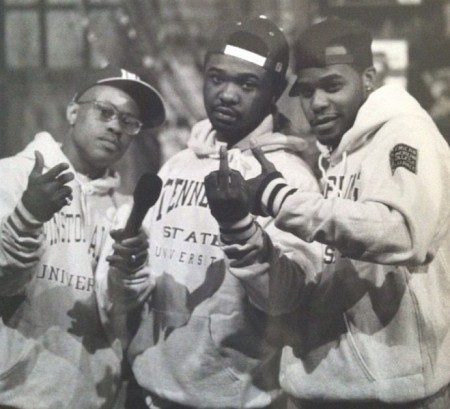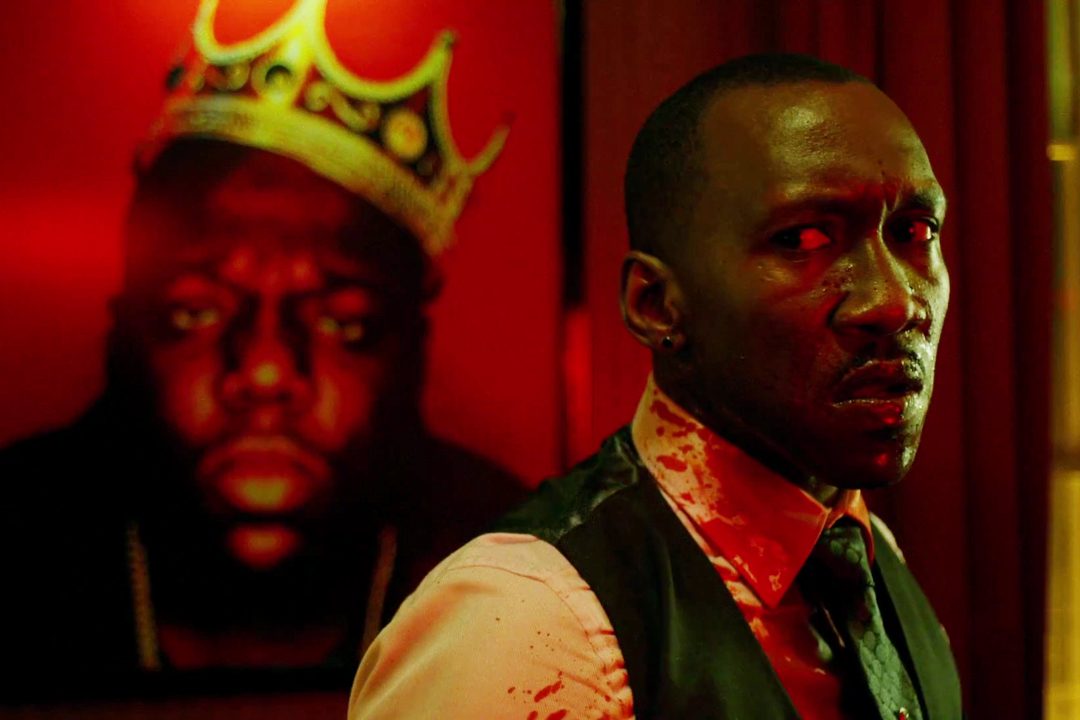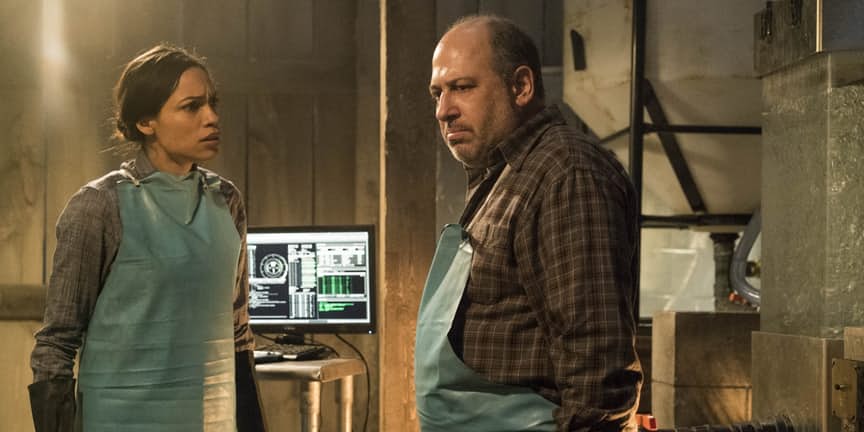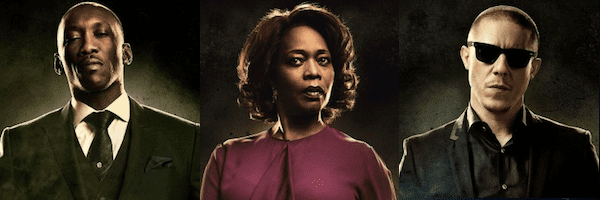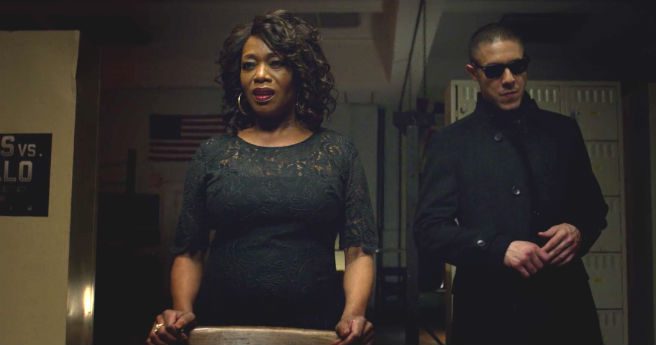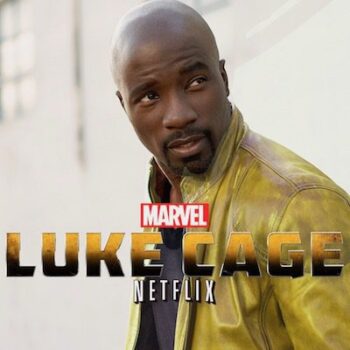
When I first heard about the premise of the original Netflix series Luke Cage—based on Marvel’s first black superhero—and began to see buzz about the show on social media, I was intrigued. The release of the show in late September came on the heels of the premieres of two other black-themed and directed shows, OWN’s Queen Sugar and FX’s Atlanta, the respective brainchildren of Ava DuVernay and Donald Glover. Both of these shows offer incredibly nuanced and diverse portrayals of black men and women—and, it should be noted, of contemporary black Southern life (read Jesmyn Ward’’s excellent piece)—and yet also manage to tell compelling stories and present character development in a way that rings true.
Enter Luke Cage, starring Mike Colter. The show has received quite a bit of attention since premiering in late September—much of which consists of praise for its diverse representation of black subjectivity in modern-day Harlem, particularly as regards female characters. Unfortunately, some of the buzz involved an absurdly racist social media backlash (discussed here) lamenting the absence of white representation/visibility on the show. Tweets included the following: “Lack of white people in Luke Cage makes me uncomfortable. This show is racist, how is this on Netflix???” and “im not racist but :/ why is luke cage so political :/ why do they talk about being black all the time :/ where are the white characters :/” It is true that there are very few white characters on Luke Cage, but that should be a non-issue, given the many decades of television history that saw an almost complete exclusion of actors and characters of color.
Nonetheless, I would argue that even the few white faces we see on the show aren’t all lumped together as evil racists. During flashback scenes in Episode 4, we meet Rackham, the head CO at Seagate, the private prison where Cage was locked up. Predictably, he is a racist sadist who abuses his position of power at every turn. On the other hand, there’s a white cop-turned-psychologist featured in Episode 9 who is quite sympathetic: his probing questions break through the tough exterior of female cop and one-time Luke Cage love interest Misty Knight (played by Simone Missick), to get to the fear and loss of control she felt when she was overtaken and held at gunpoint by Diamondback. There is also a relatively heavy presence of non-black people of color on the show, principally Latinx, although their story arcs are not very well developed. For example, while both Claire Temple (played by Rosario Dawson) and Shades (Theo Messi) are important to the storyline—functioning as respective sidekicks of Luke Cage and Cottonmouth/Mariah/Diamondback—their backstories are woefully lacking.
This show’s true strength is its diverse portrayal of African-American subjectivity and morality, amongst both the male and female characters. There are “good” black people—Luke, Pops, Misty—and there are “bad” black people—Mariah, Diamondback, and, to a certain extent, Cottonmouth (more on him later). This show’s main theme is a battle for the soul of Harlem, which has been the primary symbol of black urban life for over a century. In this sense, one might expect it to become a modern “classic” of black-themed television. And it succeeds in a few aspects. For example, an integral aspect of the show is its reliance on hip-hop, which is used both within the dialogue, and to evoke a particular mood. Gang Starr fans will surely recognize the names of all the episodes in season one as song titles of the New York-based group, one of the most respected in the history of hip hop. Episode 9, titled “DWYCK,” takes its name from one of Gang Starr’s most popular and catchy songs, which featured flows not only from Guru—Gang Starr’s inimitable MC who tragically passed in 2010 (RIP)—but also Greg Nice and Smooth B of the 90s duo Nice & Smooth.
Clearly intended as a nod to the track, Misty and the police psychologist are given lines that are direct quotes from the song: “Lemonade was a popular drink and it still is.” Incidentally, while some critics interpreted this line as an oblique reference to the tour-de-force visual album the Queen (aka Beyoncé) dropped in the spring, I’m quite sure Luke Cage creator Cheo Hodari was referencing the Gang Starr song that provides the title for this episode. While I love the idea of a direct reference to a dope song, the placement of it is a little too corny and forced for my taste—it smacked too much of “product placement.” Other hip-hop references abound. A huge portrait of another famed MC, Biggie Smalls (aka the Notorious B.I.G.), who was (along with Tupac) a martyr of the East Coast-West Coast beefs of the mid-late 1990s, hangs on the wall of Cottonmouth’s office in his club, Harlem’s Paradise.
The club is also the site of live performances by big-name R&B artists like Faith Evans (Biggie’s widow) and Raphael Saadiq (of Tony! Toni! Toné! fame), who have been influenced by hip-hop aesthetics in varying degrees. However, it is the Wu-Tang Clan—the group many hip-hop heads and historians consider to be the best in the genre’s history—whose presence is arguably as influential for the show as that of Gang Starr. In addition to the show’s use of Wu-Tang songs (such as “Bring Da Ruckus,” which accompanies a particularly kick-ass action sequence by Luke in episode three), its background music clearly draws on aesthetics popularized by legendary Wu-Tang producer the RZA. The show’s superhero themes can also be linked to the group’s well-known obsession with martial arts/kung fu films. Many of their tracks sample dialogue from these films, and their whole philosophy centers on principles drawn from kung fu legends and mythology. The show’s score harkens back to Wu-Tang’s gritty, dark production aesthetics. Given this strong association with Wu-Tang’s mystique, it wasn’t surprising to see a member of the group make a great cameo appearance, in Episode 11: Method Man, one of the group’s best lyricists, spits an ode to Luke Cage after witnessing his superpowers in action.
Unfortunately, not all of the hip-hop references succeed—some fall flat or feel forced, like the Gang Starr quote mentioned above, and a line Diamondback has in Episode 11: “Look, I’m spittin’ off the dome, it’s true, but I haven’t had a misplaced rhyme yet.” In hip-hop parlance, “spittin’ off the dome” is a metaphor for improvising in a given situation. The problem is, Diamondback is the only one speaking hip-hop in this scene, so it sounds out of place.
While hip-hop in Luke Cage is a fantastic concept with uneven results, the show’s script is a major weakness in many areas: it is all over the place, and not in a good way. Backstories are pitifully absent or misplaced for principal characters. First, Luke’s sidekick Claire: we see no history that has informed her trajectory. Claire makes almost no sense when the audience has no context for how their relationship began. All we know is that Claire nursed Luke back to health at some point after he escaped from prison; we don’t know why she is so committed to helping him, and that motivation never becomes clear during the season. Despite her importance to the story in the second half of the season, her character’s development is very limited—she seems to be a nurse version of Luke’s superhero, but there is no depth. A particularly ridiculous scene in Episode 9 involved her taking control of Luke’s “treatment” at Dr. Burstein’s house while the “expert” just stood aside and let her do almost everything. Even the most competent of nurses should not believably possess a greater depth of knowledge about chemistry and physics than a doctor who has dedicated his life to this type of research.
Some characters do get a backstory. Episode 7, which features lengthy flashbacks to the childhood of Cottonmouth and Mariah, is one of the strongest of the season. We learn how Cottonmouth was reluctantly initiated into the organized crime syndicate led by his grandmother, Mama Mabel, sacrificing his dreams of becoming a musician. It is primarily this episode, and his shocking and untimely murder by Mariah, that leaves the audience with an impression that this character was not all bad. It is also, of course, the wonderful embodiment of this character by Mahershala Ali, who is the standout actor in this ensemble cast, and the only one who I perceived as fully committed to his role.
Switching villains in the middle of a season can be a risk, and this was another misstep by the writers. Like Claire, the character of Diamondback comes out of nowhere. Up until Episode 8, his name is only invoked by Shades, as a shadowy mob boss who is protected by layers upon layers of henchmen and representatives, and who rarely makes himself known. Given this lead-up, are we now to believe that Diamondback comes out into the streets to go after Luke by himself? It’s absurd. Suddenly he wants to be a visible mob boss who also does all of his own dirty work? Again in Episode 10, Diamondback takes it upon himself to kill a cop and frame Luke Cage, exposing himself to street cameras that eventually allow Misty to identify his face.
Diamondback is a ruthless, sadistic villain, basically a caricature, whose backstory and history with Luke Cage are murky at best. We don’t find out what Luke did to provoke Diamondback’s murderous revenge spree until the last few episodes, much too late to care about this arc. Instead, audiences are left to flounder and wonder why this caricature of a villain has substituted a more nuanced antagonist, Cottonmouth, whose humanity has not been completely erased. It also feels a bit lazy for the writers to fall back on the trope of the vengeful half-brother as villain.
Finally, much has been made of the strong representations of women on Luke Cage. We certainly see a diversity of morality among the female characters—Mariah is completely amoral, Reva is ultimately discovered to have been deceptive, and Claire and Misty have extremely strong moral compasses. Misty and Mariah are the more fleshed-out characters, although I would argue that Mariah’s character development is very uneven. To its credit, the show portrays Misty as a consummate professional who isn’t desexualized or repressed. We see her in moments of strength and weakness, holding herself to an impossibly high standard. Mariah’s character arc, on the other hand, is full of holes and improbabilities. This role is clearly a departure for Alfre Woodard, one of the most accomplished black actresses of the last quarter decade. She has had a career that all actresses aspire to: numerous Emmy, Oscar, SAG, and Golden Globe nominations and wins. I can see the attraction of a role like this, a completely amoral, power-hungry character. However, I sense a sort of hesitation on Woodard’s part to completely commit to the character, and I think it’s because Mariah’s character development isn’t cohesive. At the beginning of the season, she repeatedly claims that she doesn’t want to get her hands dirty, she doesn’t want Cottonmouth’s gun-dealing to taint her political reputation. And yet, we see her constantly at the club, discussing details with Cottonmouth that she purports to not want to know. This ambivalence about Mariah’s character continues throughout the season, especially after she murders Cottonmouth. For example, in Episode 9, she repeatedly tells Diamondback and other mob bosses that she wants “out,” she wants no part of organized crime. This is right before she hatches the evil plan to sell the Judas bullets, the only kind that can penetrate Luke’s skin, to the NYPD. There is a sort of schizophrenia in Mariah’s character arc that is implausible.
All in all, Luke Cage is not great television. The writing and character development are the show’s weak links. While it succeeds in its representational goals—to portray a diversity of black characters, people of color, and women—great shows need great writing, believable story lines, and character development that makes sense. In contrast, there are several shows centered on the black experience that do all of this. BET’s Being Mary Jane, although it flies way under the radar, is a wonderful example of realistic storytelling, compelling character development, and representational diversity. ABC’s Black-ish does racial satire that pushes the boundaries of mainstream notions about African Americans, while still managing to provide the “wholesomeness” that seems to be required of network comedy. And, as mentioned earlier, this television season has introduced us to the poignant and beautiful drama Queen Sugar and the hilarious, eccentric brilliance of Atlanta and HBO’s Insecure, the latter two of which have scored Golden Globe nominations. So while I struggled to get through the whole season of Luke Cage, in the wake of #OscarsSoWhite and the increasingly vocal critiques of the lack of representation of people of color in TV and film, it’s exciting to see so many diverse portraits of black American life on the small screen.
***
Image credits: feature image, image 1, image 2, image 3, image 4, image 5.

